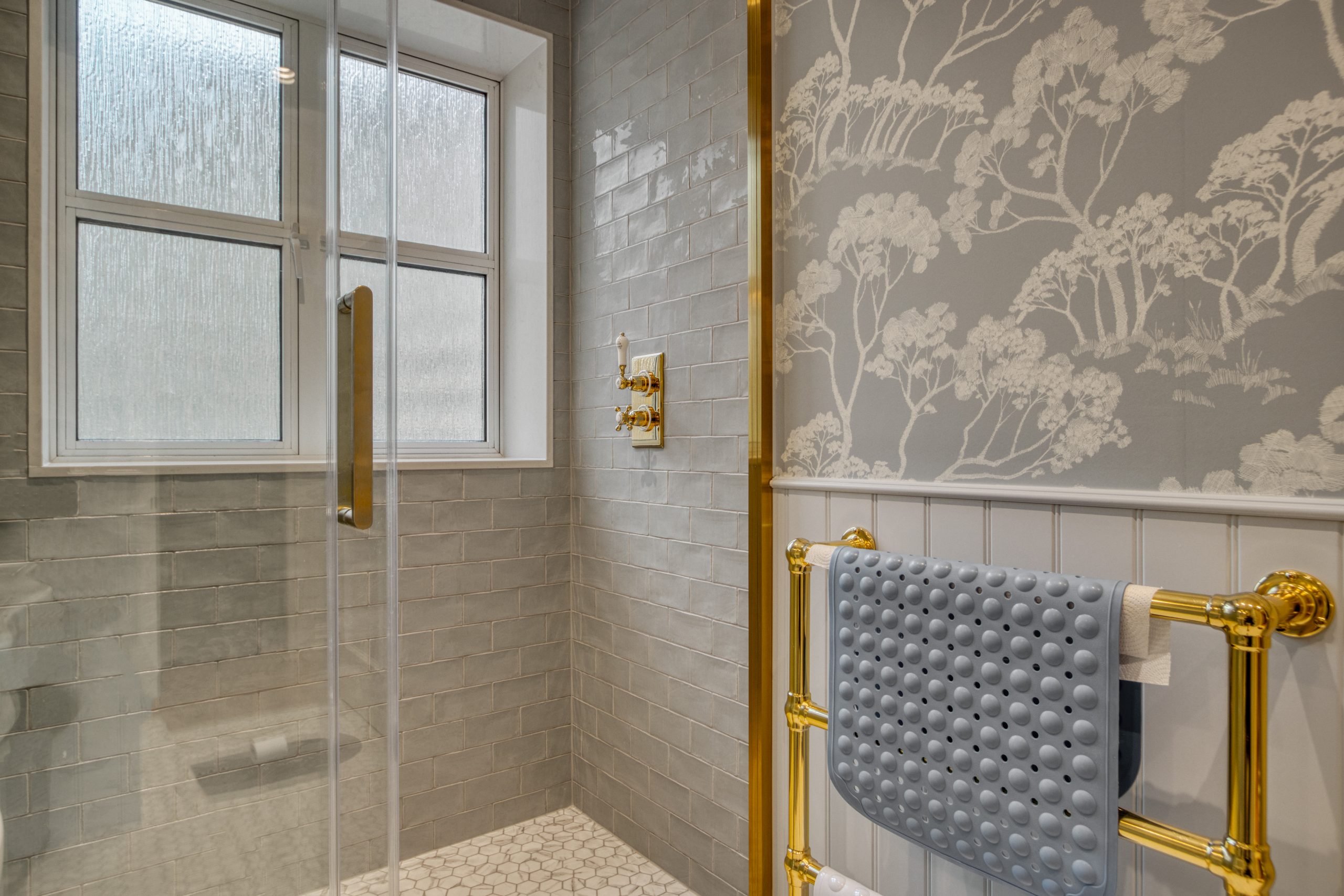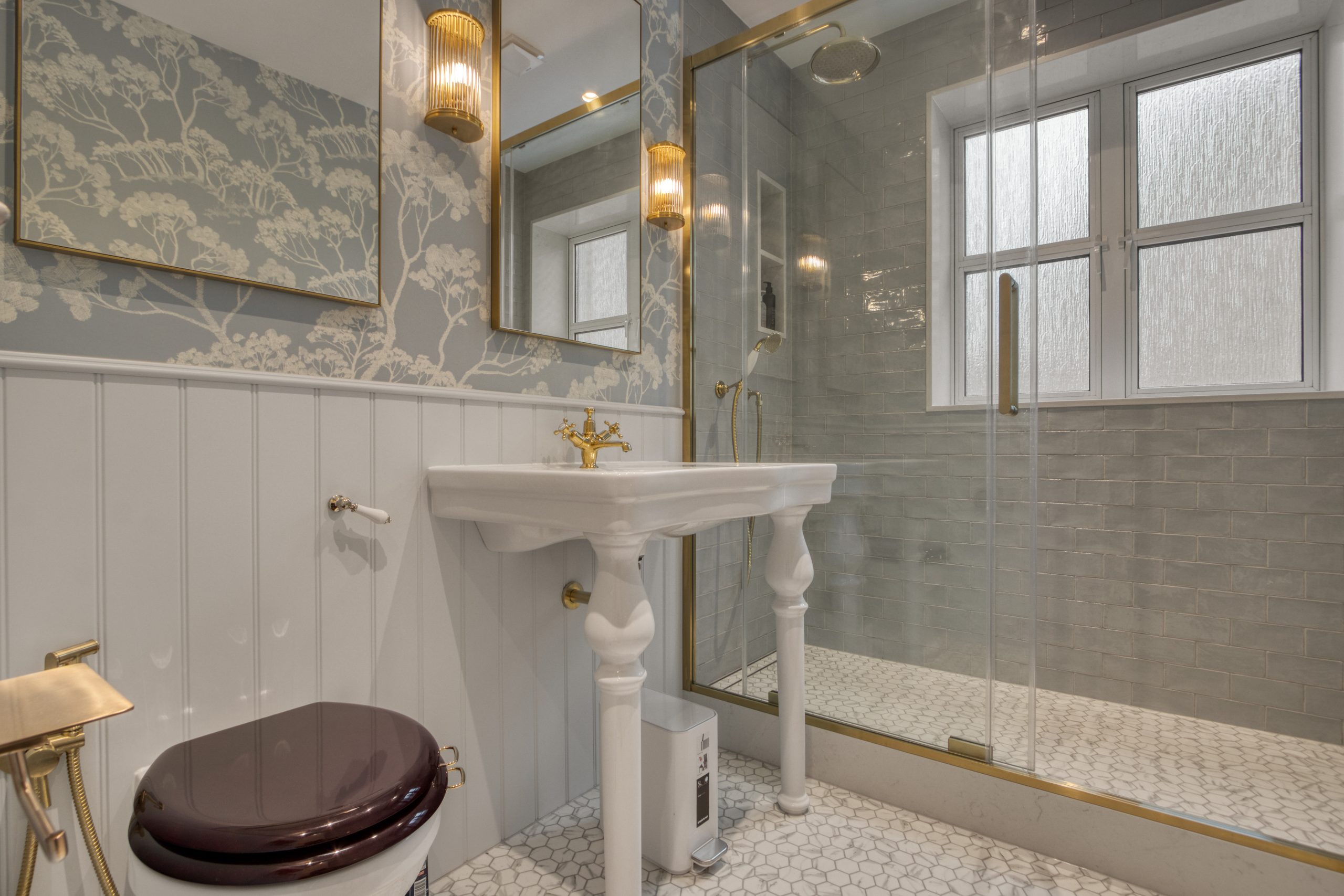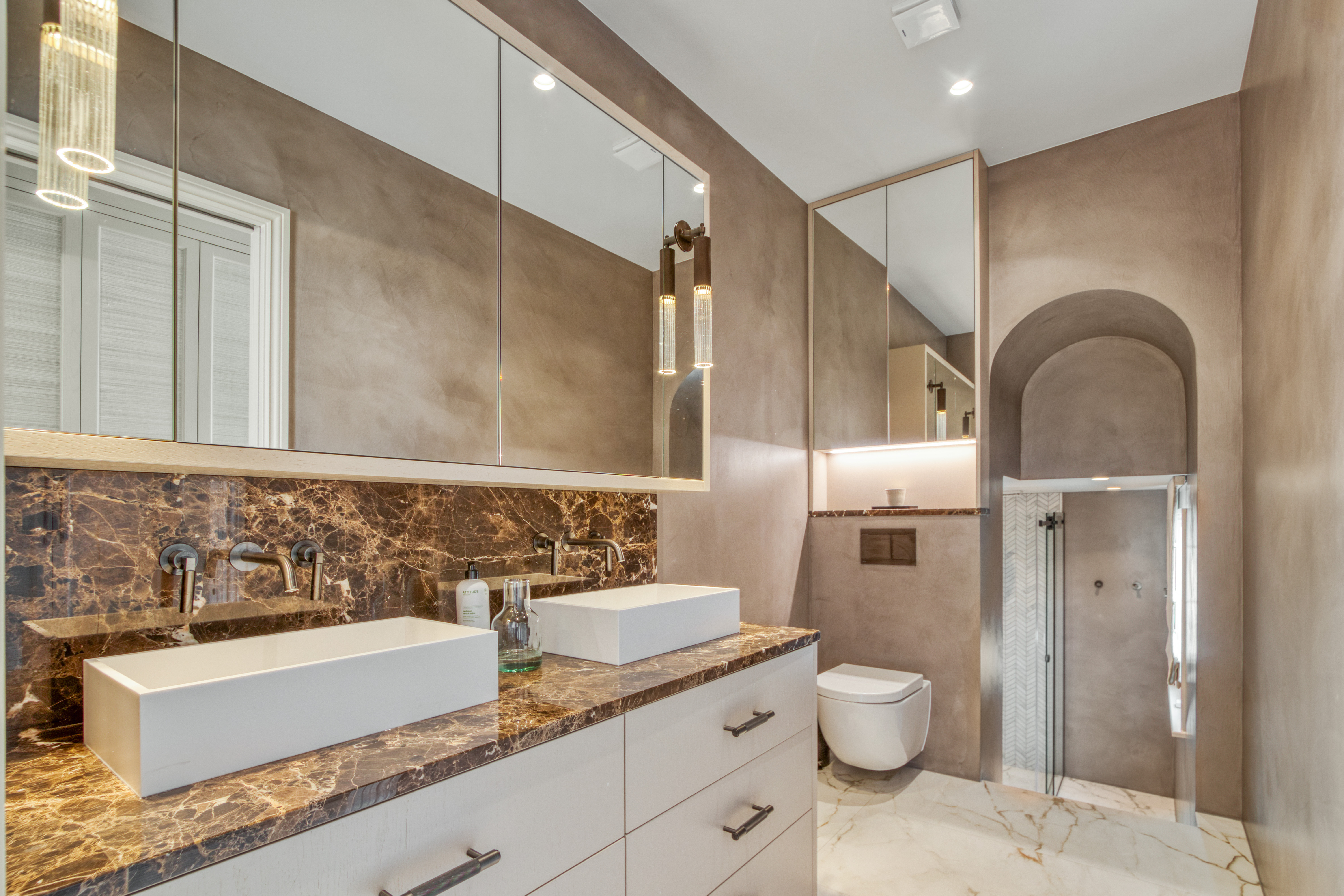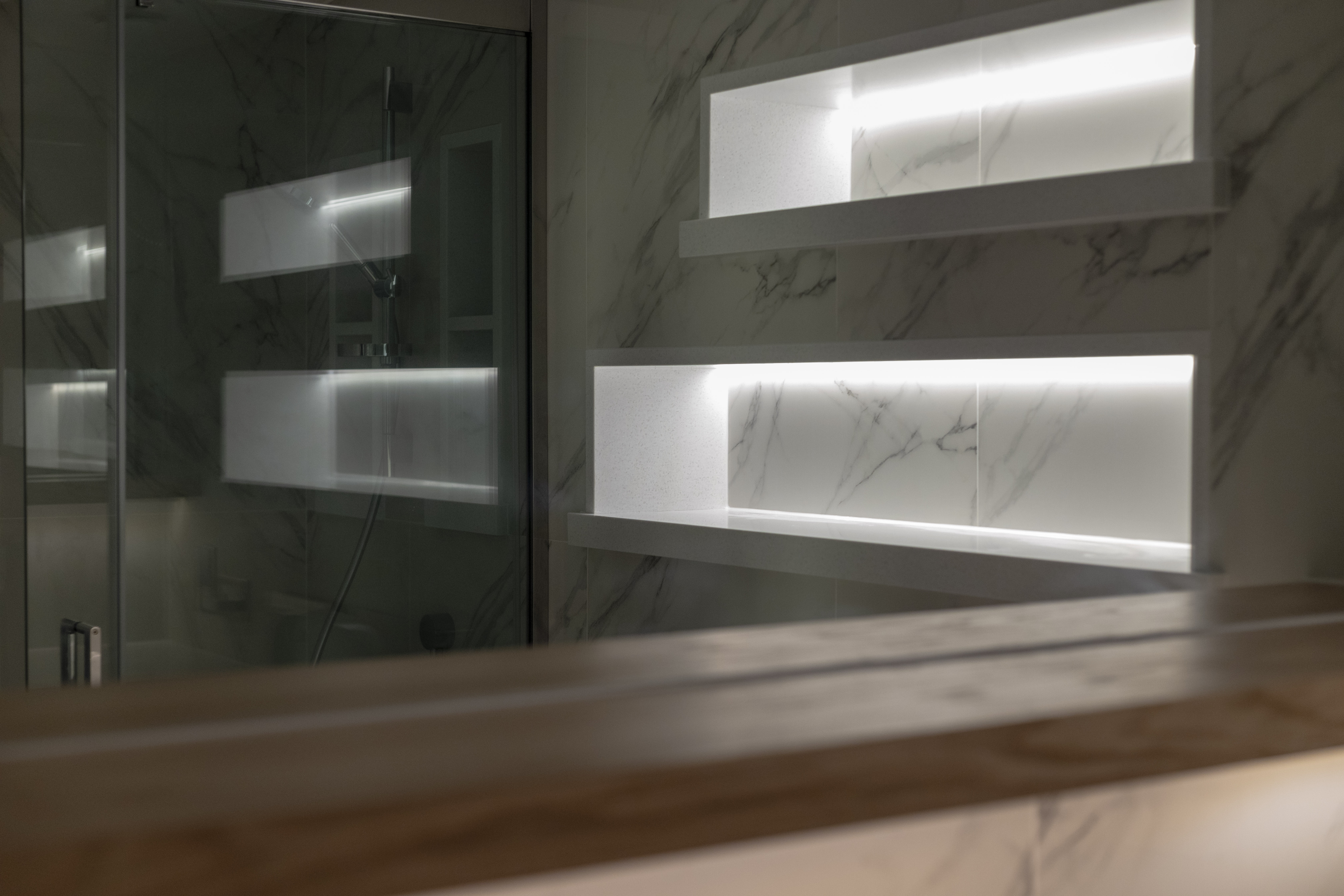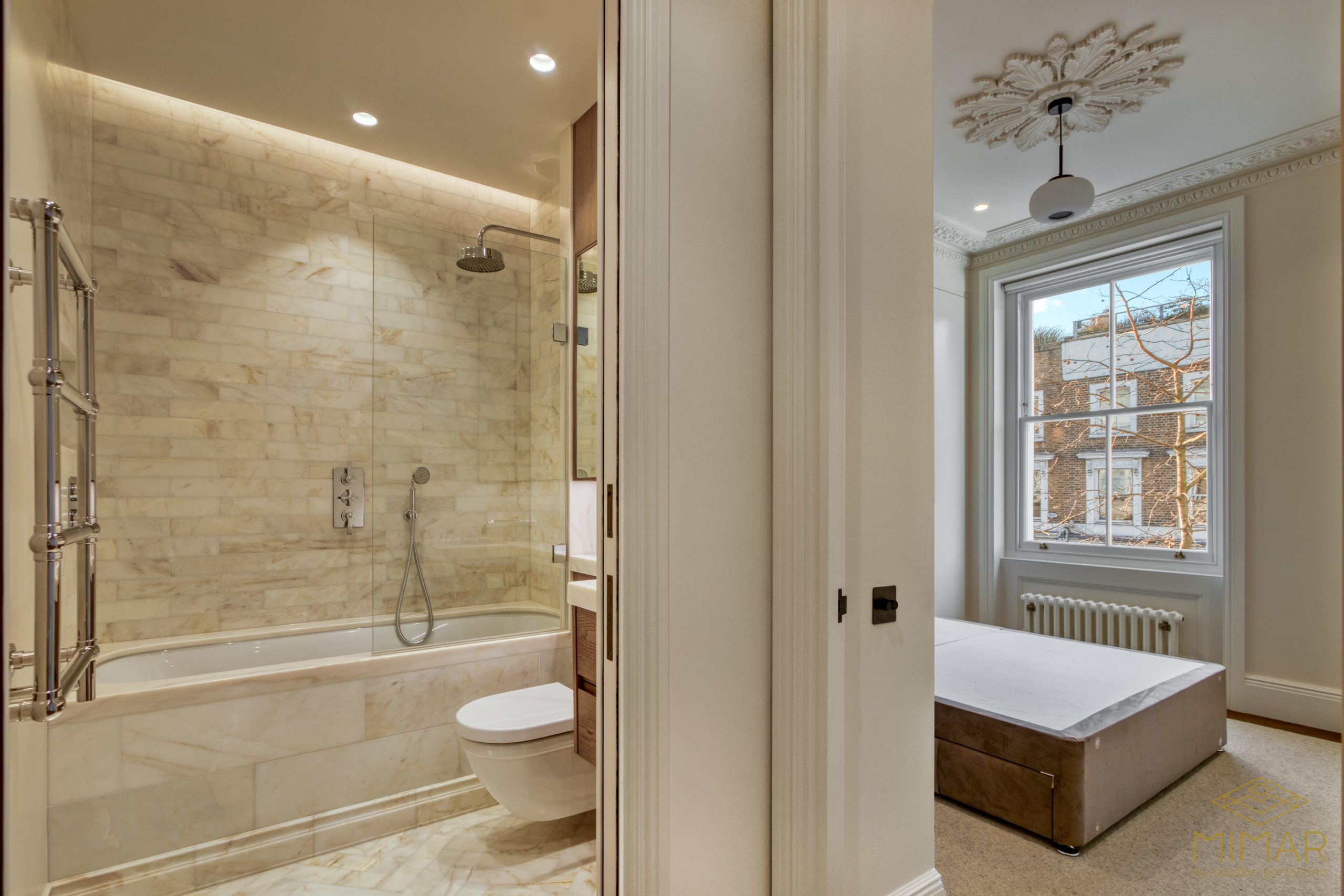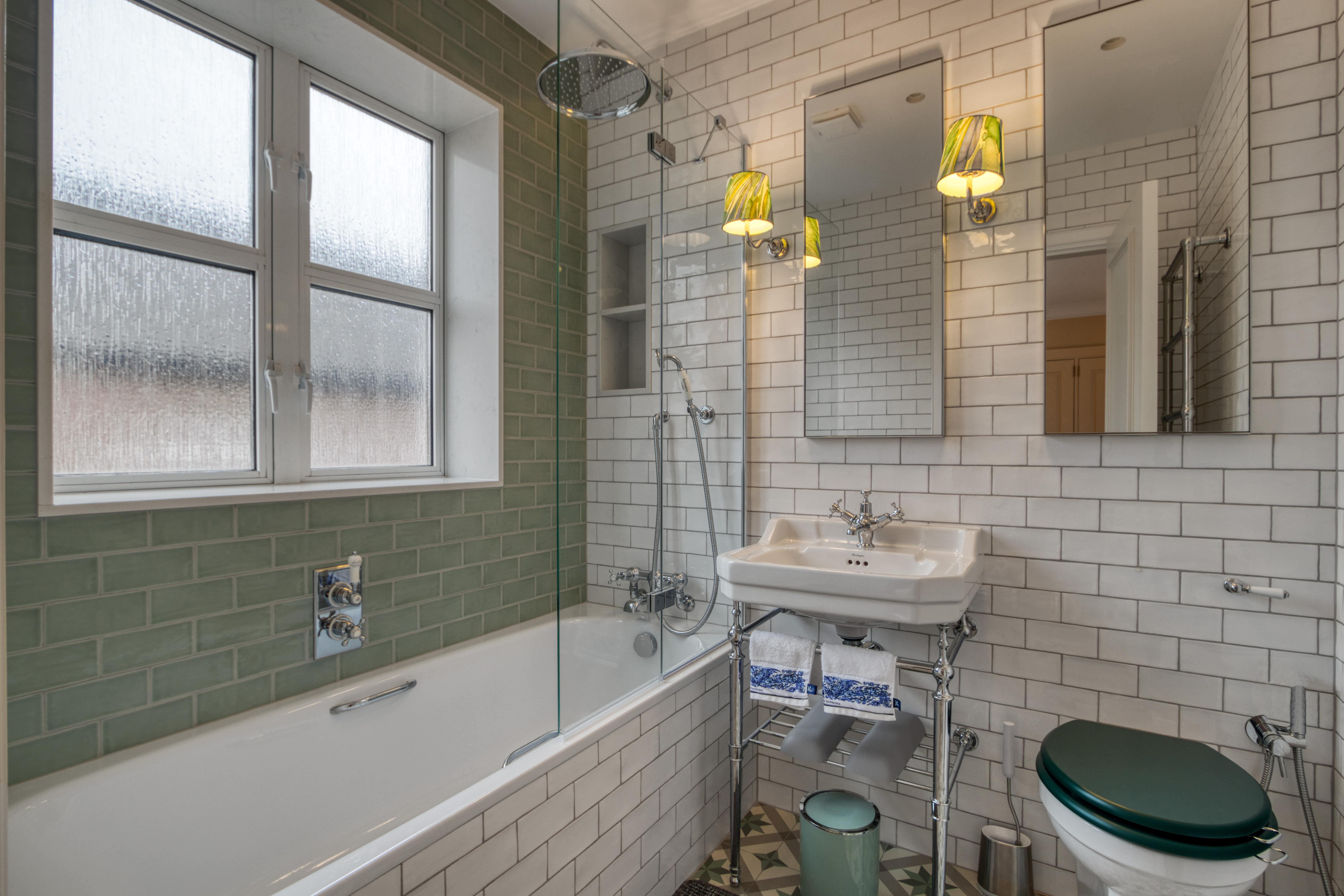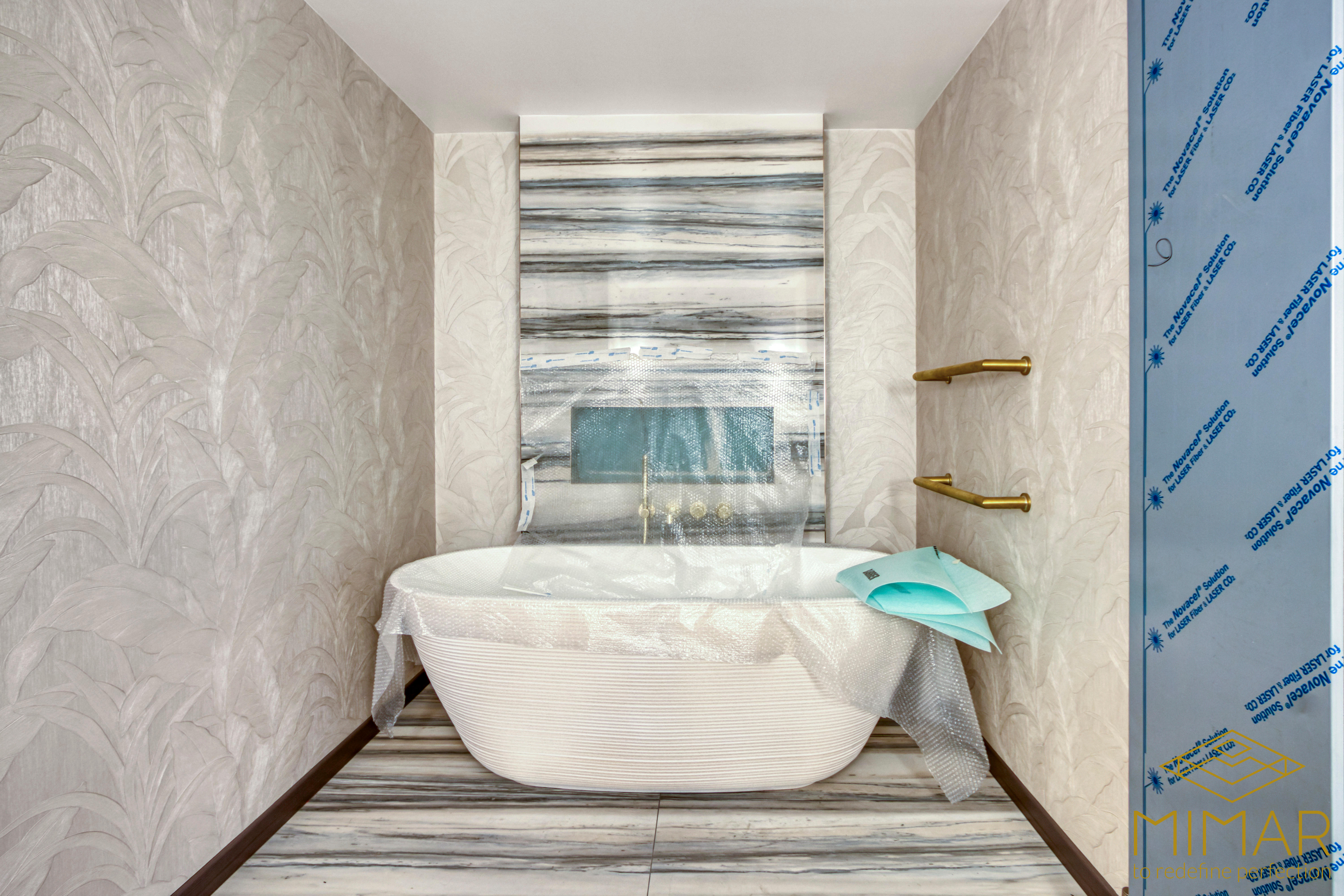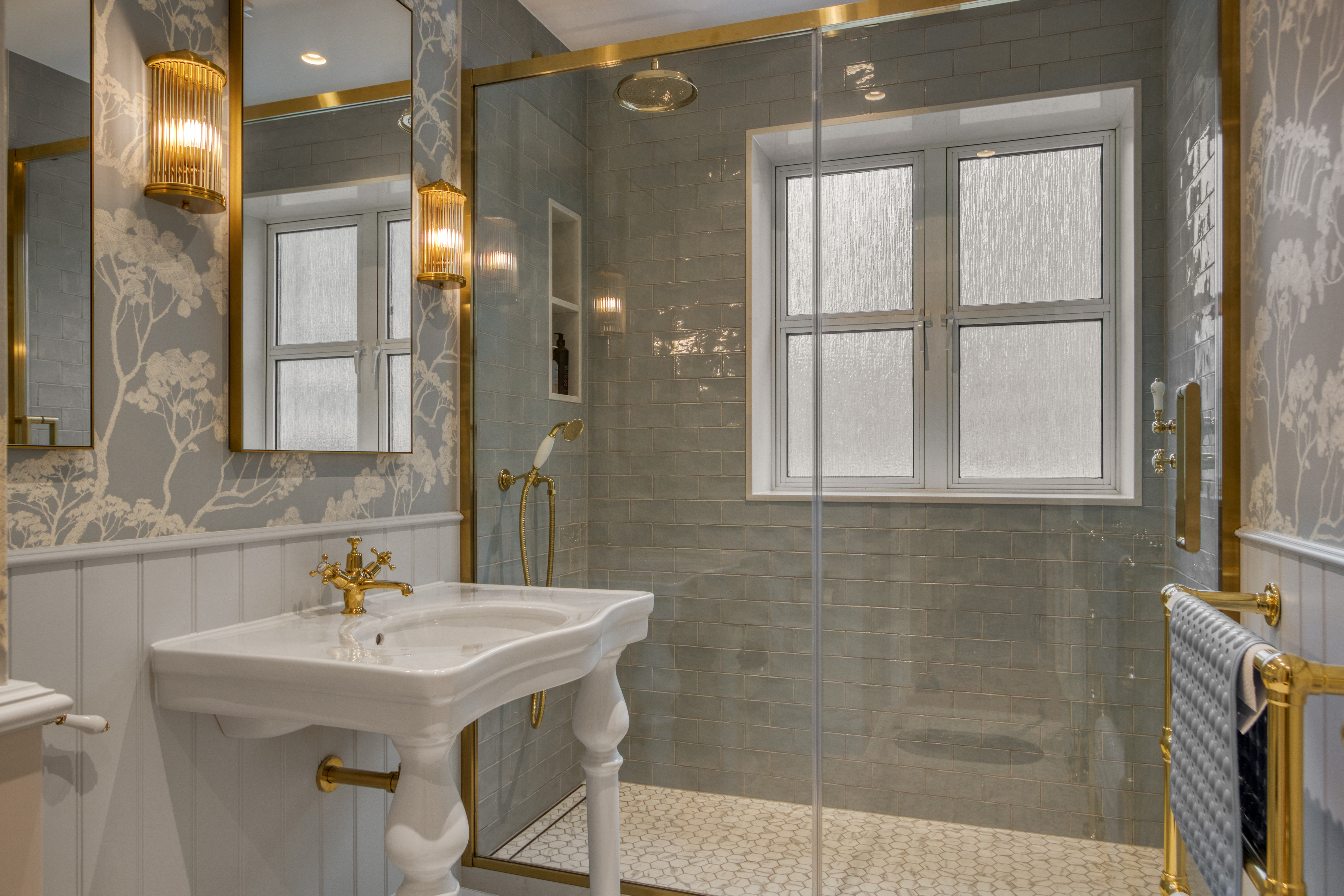Table of Contents
- Introduction
- Unique Considerations for London Bathroom Renovations
- Planning Your Bathroom Renovation in London
- Choosing the Right Professionals for Your Project
- The Bathroom Refurbishment Process in London
- Understanding Different Types of Bathroom Projects
- Managing Timeline, Disruption, and Compliance
- Selecting Fixtures and Fittings for London Homes
- Common Pitfalls and How to Avoid Them
- Success Stories: London Bathroom Transformations
- Conclusion
Introduction: The Path to a Successful Bathroom Renovation in London
A bathroom refurbishment in London represents one of the most rewarding yet challenging home improvement projects you can undertake. In the capital’s competitive property market, a well-executed bathroom renovation can significantly enhance both your living experience and your home’s value. Whether you’re planning a bathroom remodel in London to create a personal sanctuary or preparing to sell, the investment is substantial—both financially and in terms of disruption to your daily routine. This comprehensive guide provides expert insights to ensure your bathroom refurbishment London project proceeds smoothly from conception to completion.
London’s unique property landscape—with its mix of period homes, converted flats, and modern apartments—presents specific challenges and opportunities for bathroom renovations. Space constraints, plumbing considerations, and local regulations all require careful navigation. By understanding these factors and planning meticulously, you can achieve a bathroom that balances luxury, functionality, and value while avoiding common pitfalls. If you want to go a step further and create a sanctuary at home, consider these spa-like refurbishment tips for inspiration.
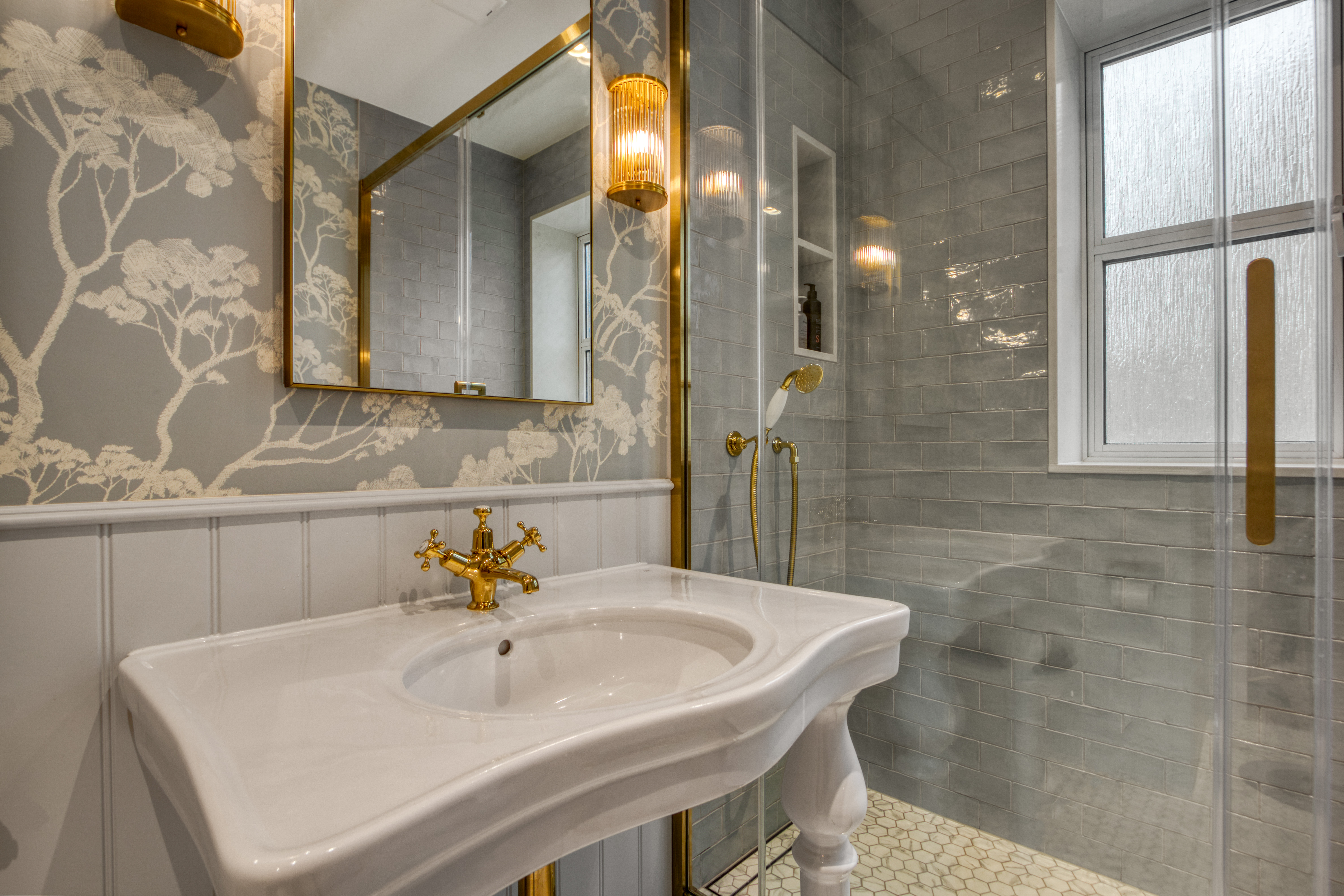
Expert Insight
According to London renovation specialists, bathrooms typically offer one of the highest returns on investment among home improvement projects, with well-executed renovations potentially adding up to 5% to a property’s value—particularly important in London’s premium market.
Unique Considerations for London Bathroom Renovations
London’s architectural diversity creates distinctive challenges for bathroom renovations that differ from those in other parts of the UK:
Property Types and Historical Considerations
London encompasses everything from Georgian townhouses to Victorian terraces, Edwardian conversions, and contemporary developments. Each property type presents unique structural and spatial considerations. Period properties often feature original pipework that may need updating, while listed buildings require sensitive approaches that preserve historical features while incorporating modern amenities. Many London contractors specialize in specific property eras, bringing invaluable expertise to these challenges.
Space Optimization in London Homes
With London’s premium on square footage, maximizing limited bathroom space becomes essential. Many properties, particularly in central areas, feature compact bathrooms that demand creative solutions. Clever design approaches can transform even the smallest spaces into functional, luxurious retreats—a particular skill of experienced London bathroom designers who understand how to work with the city’s spatial constraints. Explore expert tips for small bathroom remodeling and innovative design ideas to make the most of compact spaces.
Space-saving innovations like wall-hung toilets and basins, corner installations, and walk-in showers with frameless glass create an illusion of spaciousness while maintaining functionality. Strategic use of mirrors and lighting can further enhance the sense of space in a London bathroom remodel.
London-Specific Regulations and Permissions
Navigating London’s regulatory landscape requires expertise. Beyond standard UK building regulations, you may need to consider:
- Conservation area restrictions in historic districts
- Listed building consents for protected properties
- Leasehold permissions in apartment buildings
- Party wall agreements with neighbors for structural alterations
- Water regulations specific to Thames Water requirements
These considerations make early consultation with professionals familiar with London requirements particularly valuable. Building control approval and appropriate certifications for electrical and plumbing work are non-negotiable aspects of a compliant bathroom renovation. For a broader understanding of obtaining planning permissions and preparing your project, see this guide on project practicalities and permissions.
Planning Your Bathroom Renovation in London
Setting Clear Objectives
Begin by articulating what you hope to achieve with your bathroom refurbishment in London. Are you addressing functional issues like poor layout or inadequate storage? Seeking to modernize an outdated space? Creating a luxury retreat? Increasing property value for resale? Understanding your primary goals helps prioritize design decisions and budget allocation.
Create separate lists of “essentials” (must-have improvements) and “desirables” (features you’d like to include if budget allows). This prioritization becomes invaluable when making inevitable compromises during the project.
Defining the Scope of Your Bathroom Refit London Project
The scope of your renovation significantly impacts timeline, budget, and disruption. Consider whether you need:
- A cosmetic refresh (new surfaces, fixtures, and decoration with minimal structural changes)
- Partial remodeling (some layout changes and replacement of key elements)
- Complete transformation (full strip-out, structural alterations, and comprehensive redesign)
Be realistic about what can be achieved within your space constraints and budget. Consulting with a bathroom design specialist early can help define an achievable scope that maximizes impact while controlling costs.
Establishing a Realistic Budget for London
London bathroom renovation costs typically run higher than the UK average due to elevated labor rates, material delivery complications, parking restrictions, and the complexity of working in older buildings. According to recent market analysis, expect to budget:
| Project Type | Typical London Cost Range |
|---|---|
| Basic bathroom refurbishment | £4,000 – £7,000 |
| Mid-range bathroom remodel | £8,000 – £15,000 |
| Luxury bathroom renovation | £15,000 – £30,000+ |
Always include a contingency of 15-20% for unexpected issues that frequently arise in London properties, particularly in older buildings where hidden problems behind walls or floors are common. This financial buffer helps prevent project delays or compromises in quality when surprises occur. For a breakdown of what factors influence your bathroom remodel costs in London, including specific considerations for bathtubs, see this detailed guide.
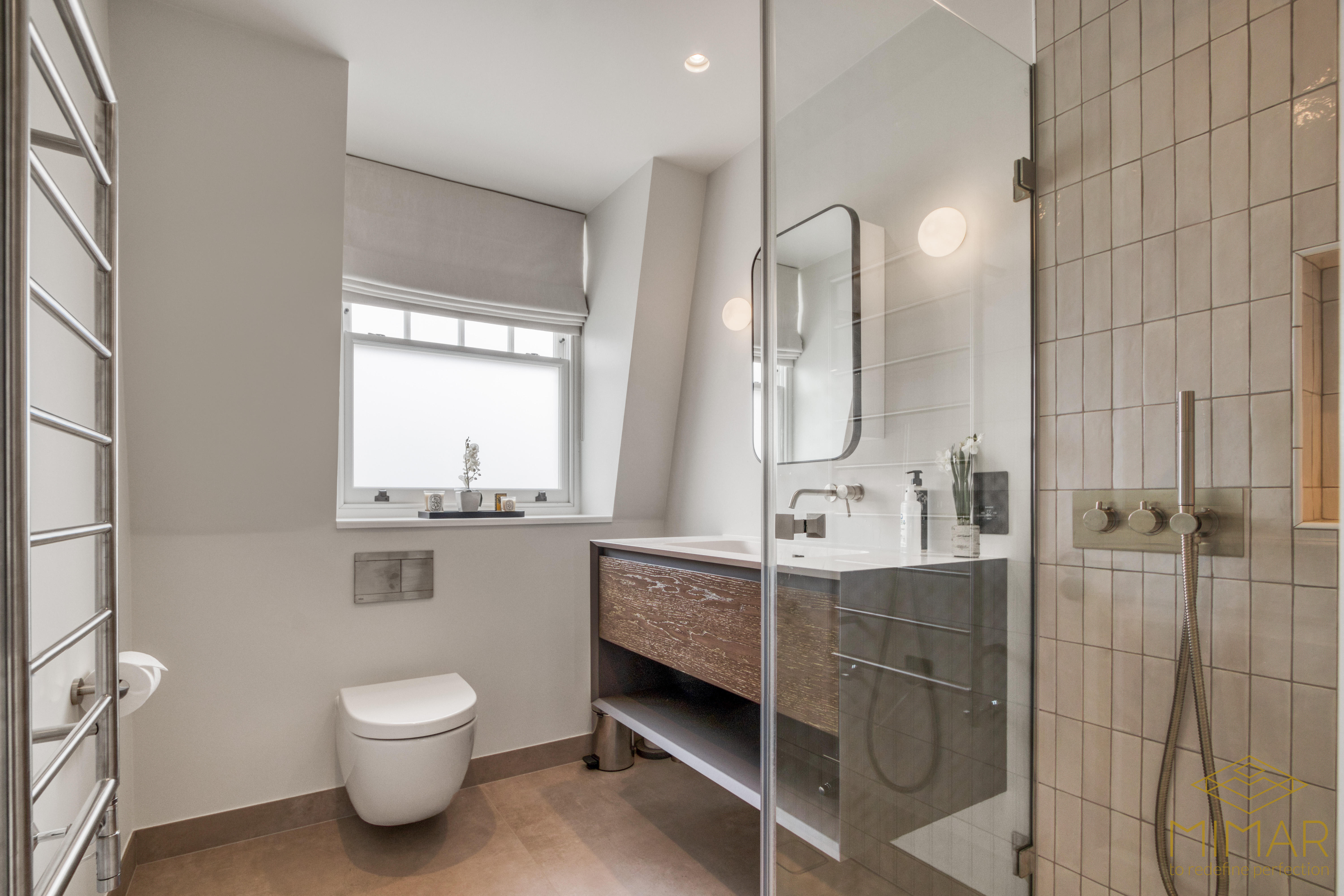
Choosing the Right Professionals for Your Project
Finding and Vetting London Bathroom Specialists
The quality of your bathroom renovation team directly impacts your project’s success. In London’s diverse contractor market, thorough vetting is essential. Start your search through:
- Personal recommendations from friends or neighbors who’ve completed similar projects
- Trade associations like the Federation of Master Builders or the British Institute of Kitchen, Bedroom & Bathroom Installation
- Online platforms with verified reviews specific to London projects
When evaluating potential contractors for your bathroom remodel London project, verify:
- Proper insurance and qualifications (particularly Gas Safe and electrical certifications)
- Experience with similar properties in your London borough
- Portfolio of completed London bathroom projects
- Client references you can personally contact
If you are considering an architect-led process or want to understand the collaborative benefits of working with architects, this resource on collaborating with architects for refurbishments offers practical advice for London homeowners.
The Value of Detailed Quotes
Obtain at least three detailed quotes to compare approaches and costs. A thorough quote should itemize all aspects of the project, including:
- Demolition and waste removal (particularly important in London with its access and disposal regulations)
- Structural work and any required reinforcements
- Plumbing installation and alterations
- Electrical work and lighting
- Tiling and waterproofing
- Fixture supply and installation
- Decorating and finishing
Be wary of quotes significantly lower than others—this often indicates corners being cut or potential for substantial “extras” later. The most comprehensive quotes provide clarity on payment schedules, timelines, and warranties, helping avoid disputes during your bathroom refurbishment London project. Learn why selecting the right construction company matters and how dedicated teams can elevate your experience in our guide to achieving refurbishment success in London.
The Bathroom Refurbishment Process in London
Material Choices for London Bathrooms
Material selection balances aesthetics, practicality, and durability—particularly important in London’s humid climate and hard water conditions. High-quality materials may cost more initially but often provide better long-term value through extended lifespan and reduced maintenance.
For London bathrooms, consider:
- Tiles: Porcelain offers excellent durability and water resistance with minimal maintenance. Natural stone provides luxury appeal but requires more upkeep.
- Sanitaryware: Vitreous china and high-quality ceramics resist staining from London’s hard water. Wall-hung fixtures maximize floor space in compact bathrooms.
- Cabinetry: Moisture-resistant MDF or marine-grade plywood with quality lacquer finishes stand up to bathroom humidity.
- Fixtures: Brass or stainless-steel fixtures with quality finishes resist corrosion in London’s water conditions.
Working with suppliers who understand London’s specific challenges ensures appropriate material recommendations for your bathroom refurbishment London project. For tips on sustainable material choices and eco-friendly upgrades, see our guide to sustainable home refurbishment in London.
Design Trends Popular in London
London bathrooms often showcase distinctive design approaches that balance contemporary aesthetics with practical considerations:
- Wet rooms: Increasingly popular in London’s space-conscious properties, offering accessibility and visual spaciousness.
- Statement tiles: Patterned feature walls or floors that create visual impact in compact spaces.
- Neutral palettes: Timeless colors that maximize light and create a sense of calm in busy urban environments.
- Integrated technology: Smart mirrors, digital showers, and heated floors enhance convenience and luxury.
- Freestanding elements: Statement bathtubs or basins that create focal points in larger bathrooms.
The most successful London bathroom designs consider both current trends and timeless elements that will maintain appeal for years to come, as highlighted by luxury renovation specialists. If you’re aiming for luxury finishes and want to create a spa-like retreat at home, explore our expert bathroom refurbishment tips.
Maximizing Space in London Bathrooms
With space at a premium in most London properties, intelligent design strategies make substantial differences:
- Recessed storage niches built into walls for toiletries
- Mirror cabinets that combine functionality with visual enhancement
- Corner or wall-mounted installations that free up floor space
- Glass shower enclosures rather than curtains or solid partitions
- Light colors and reflective surfaces to enhance spatial perception
- Multi-functional fixtures like shower-baths for smaller spaces
Professional designers experienced in London properties can recommend space-maximizing solutions specific to your bathroom’s dimensions and configuration. For more creative ideas tailored to small and very small bathrooms, check out these smart design solutions for small spaces.
Understanding Different Types of Bathroom Projects
When planning your project, understanding the distinction between different types of bathroom renovations helps clarify scope, budget, and expectations:
Bathroom Refurbishment London
A refurbishment typically involves cosmetic improvements and minor upgrades without significant layout changes or extensive plumbing alterations. This approach works well when:
- The existing bathroom layout functions effectively
- Budget constraints limit scope for structural changes
- You’re satisfied with the bathroom’s size and configuration
- The goal is refreshing appearance rather than transformation
A typical bathroom refurbishment in London might include new tiles, sanitaryware, taps, lighting, and decorative elements while maintaining the original layout. To transform your space and create a sense of serenity, explore our advice on refurbishing for a spa-like retreat.
Bathroom Refit London
A bathroom refit generally involves replacing most or all fixtures and fittings, potentially with some layout adjustments but without major structural work. This approach suits situations where:
- Existing fixtures are dated or damaged
- Minor layout improvements would enhance functionality
- You want significant visual updating without major construction
- The existing bathroom footprint works but needs modernization
A bathroom refit in London typically includes new sanitaryware, cabinetry, tiling, and possibly moving fixtures within the existing space.
Bathroom Remodel London
A complete remodel involves substantial reconfiguration, often with structural alterations, moved walls, or expansion into adjacent spaces. Consider a full remodel when:
- The current layout is fundamentally problematic
- You want to incorporate space from adjoining rooms
- Major plumbing relocations would significantly improve functionality
- You’re seeking a comprehensive transformation
A bathroom remodel in London might include removing walls, relocating doors, installing new windows, moving soil stacks, and completely reimagining the space. For a cost analysis and budgeting tips, visit our guide on bathtub renovation costs and budgeting for bathroom projects.
Understanding which approach best suits your needs helps set realistic expectations and ensures your contractor provides appropriate advice and costing for your bathroom renovation London project.
Managing Timeline, Disruption, and Compliance
Realistic Timeline Planning for London Projects
London bathroom renovations often take longer than similar projects elsewhere due to logistical complexities. A realistic timeline helps manage expectations:
- Basic refurbishment: 2-3 weeks
- Standard refit: 3-4 weeks
- Complete remodel: 5-8 weeks or longer
Factors that commonly extend timelines in London include parking restrictions affecting material deliveries, limited working hours in some buildings, and unexpected issues in older properties. Building buffer time into your schedule helps accommodate these London-specific challenges. For insights on how to minimize disruption, noise, and mess during your build, see our advice on reducing inconvenience in home renovation projects.
Minimizing Disruption During Your Bathroom Renovation
With many Londoners living in flats or terraced houses, minimizing disruption becomes particularly important:
- Establish clear working hours that comply with local noise regulations
- Arrange alternate bathroom facilities if you have only one bathroom
- Create dust containment systems to protect other areas of your home
- Coordinate with neighbors in advance, particularly for shared buildings
- Plan for secure material storage given London’s limited space
Professional contractors experienced in London renovations will have established protocols for managing these aspects, as emphasized by industry experts. You can further explore the importance of realistic timetables and considerate practices in this handy guide to managing noise and mess.
Ensuring Regulatory Compliance
Compliance with regulations is non-negotiable for London bathroom renovations:
- Building Regulations: All bathroom renovations must comply with current building regulations, particularly regarding ventilation, electrical safety, and water efficiency.
- Certified Tradespeople: Electrical work requires notification to building control or completion by a registered competent person scheme member.
- Water Regulations: Plumbing must meet water regulations to prevent contamination and ensure efficiency.
- Planning Permission: Usually not required for internal renovations unless in listed buildings or involving significant structural changes.
Working with reputable professionals ensures your bathroom refurbishment London project meets all regulatory requirements, providing peace of mind and avoiding potential legal issues or complications when selling your property. For in-depth information on essential certifications and their costs, especially regarding electrical compliance, read our guide to EICR certificates for London property owners.
Selecting Fixtures and Fittings for London Homes
Plumbing Considerations in London Properties
London’s diverse property stock presents various plumbing challenges that influence fixture selection:
- Water Pressure: Older London buildings often have lower water pressure, requiring compatible shower systems and taps.
- Pipework: Period properties may have antiquated pipework that needs updating to support modern fixtures.
- Space Constraints: Compact London bathrooms may require specialized slim-profile fixtures.
Professional assessment of your property’s plumbing system before fixture selection helps avoid performance disappointments and costly modifications later.
Heating and Energy Efficiency
With London’s energy costs among the highest in the UK, efficiency considerations are paramount:
- Heating Options: Underfloor heating provides space-efficient warming for London bathrooms without protruding radiators.
- Water Efficiency: Low-flow fixtures reduce water consumption without compromising performance.
- Insulation: Proper insulation behind bath panels and under floors improves heat retention, particularly in older London properties.
Many London homeowners now prioritize energy-efficient features that reduce environmental impact while lowering running costs, according to industry surveys. For more sustainable strategies, including lighting and material recommendations, check our eco-friendly refurbishment guide.
Storage Solutions for London Bathrooms
Effective storage transforms the functionality of London bathrooms:
- Tall but narrow cabinets maximize vertical space
- Custom-built storage utilizes awkward corners and niches common in London properties
- Mirrored cabinets combine functionality with visual expansion
- Wall-mounted options preserve valuable floor space
Experienced bathroom designers can recommend storage solutions tailored to your specific space constraints and usage patterns. Find additional inspiration for optimizing very small spaces in our creative small bathroom design guide.
Common Pitfalls and How to Avoid Them
Poor Planning and Insufficient Research
Many London bathroom renovation disappointments stem from inadequate preparation. Avoid this by:
- Taking time to research options thoroughly before committing
- Visiting showrooms to physically see and test products
- Creating detailed plans and elevations to visualize the finished space
- Consulting with experienced professionals early in the process
The investment in proper planning pays dividends in smoother project execution and more satisfying results. If you’re unsure where to begin, consulting with an architect for your refurbishment can help clarify vision and improve outcomes.
Unrealistic Budgeting
Budget overruns frequently derail London bathroom projects. Protect yourself by:
- Getting comprehensive, itemized quotes rather than rough estimates
- Building in a substantial contingency for unexpected issues
- Being realistic about material costs and labor rates in London
- Clarifying exactly what is and isn’t included in contractor quotes
Transparency about financial constraints from the outset allows professionals to suggest appropriate compromises without sacrificing quality. For specific advice on controlling costs and making smart budgeting choices, read our detailed bathroom renovation cost guide.
Prioritizing Aesthetics Over Functionality
A bathroom that looks stunning but functions poorly quickly becomes frustrating. Maintain balance by:
- Considering practical aspects like cleaning accessibility
- Testing ergonomics of layouts before finalizing plans
- Ensuring adequate lighting for all bathroom functions
- Selecting materials suitable for London’s climate and water conditions
The most successful bathroom renovations in London achieve both beauty and practicality, enhancing daily life rather than complicating it. For further guidance on combining function and luxury, browse our expert bathroom remodeling tips.
Professional Advice
Always check a product’s suitability for your specific plumbing system before purchase. Many beautiful fixtures available in London showrooms are designed for high-pressure systems and perform poorly in older properties with gravity-fed water supplies.
Success Stories: London Bathroom Transformations
Victorian Terrace in South London
A compact bathroom in a Clapham Victorian terrace was transformed from a cramped, outdated space into a bright, functional retreat. Key elements of this successful bathroom refurbishment London project included:
- Removing an unnecessary partition wall to create a more open feel
- Installing a walk-in shower with frameless glass to enhance spaciousness
- Introducing wall-hung sanitaryware to maximize floor visibility
- Creating bespoke built-in storage to utilize awkward alcoves
- Using large-format tiles with minimal grouting for easier cleaning
The renovation respected the period character while introducing modern functionality—a balance particularly valued in London’s period properties. To learn how the right company can deliver these results, review the top reasons to choose experts for your London refurbishment.
Modern Apartment in East London
A bathroom remodel London project in a Canary Wharf apartment demonstrated how contemporary design can maximize impact in newer properties:
- Reconfiguring the layout to incorporate a statement freestanding bath
- Installing sensor-activated lighting for energy efficiency
- Introducing underfloor heating for comfort and space efficiency
- Creating a wet room area with linear drainage for streamlined aesthetics
- Using smart technology for temperature and lighting control
This project showcased how thoughtful design can transform even standardized developer bathrooms into personalized luxury spaces. See more small bathroom remodeling solutions for modern flats and apartments.
Listed Building in Central London
A bathroom refit in a Grade II listed Bloomsbury property demonstrated how to integrate modern amenities while respecting historical constraints:
- Retaining and restoring original features where possible
- Introducing modern plumbing discreetly behind period-appropriate paneling
- Selecting fixtures with traditional styling but contemporary performance
- Working closely with conservation officers to ensure appropriate materials
- Creating removable interventions that don’t permanently alter the fabric of the building
This project highlights the importance of specialist knowledge when renovating London’s protected historic properties. For practical steps on planning and permissions, check our guide to assembling your refurbishment project.
Conclusion: Your Path to Bathroom Renovation Success in London
A successful bathroom renovation in London combines careful planning, expert execution, and attention to detail. By understanding the unique considerations of London properties, establishing clear goals and realistic budgets, engaging qualified professionals, and making informed choices about materials and fixtures, you can create a bathroom that enhances both your daily life and your property’s value.
Remember that a bathroom refurbishment London project is an investment—not just in your property but in your quality of life. Taking time to research, plan, and select the right team pays dividends in creating a space that functions beautifully for years to come. For more on maximizing refurbishment outcomes, explore how architect-led renovations can add value to your home.
Whether you’re contemplating a simple bathroom refit in London or a comprehensive bathroom remodel London project, the principles remain the same: quality should never be compromised, functionality must balance with aesthetics, and professional expertise is invaluable in navigating the complexities of London renovations. For a comprehensive, collaborative experience, discover the benefits of choosing the right refurbishment company.
With proper preparation and the right team, your bathroom renovation journey can transform one of your home’s most essential spaces into a personal sanctuary that perfectly suits London living. If you’re committed to sustainability, our eco-friendly refurbishment tips will help you create a greener and more energy-efficient home.

